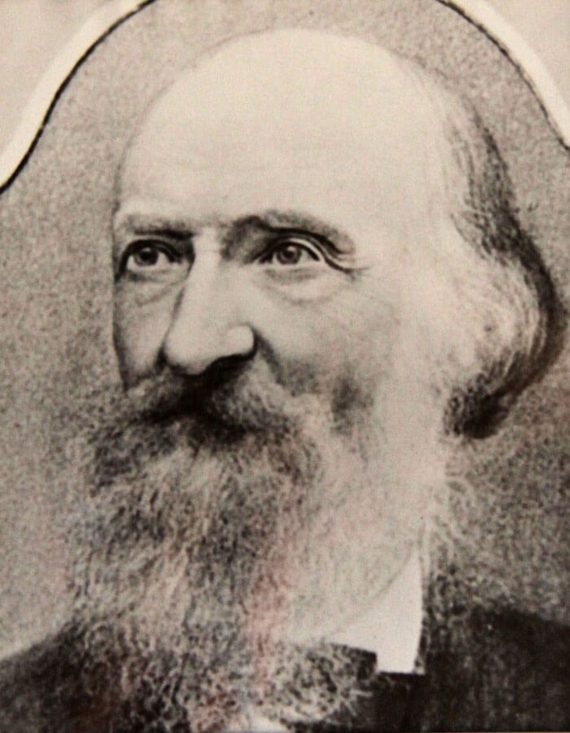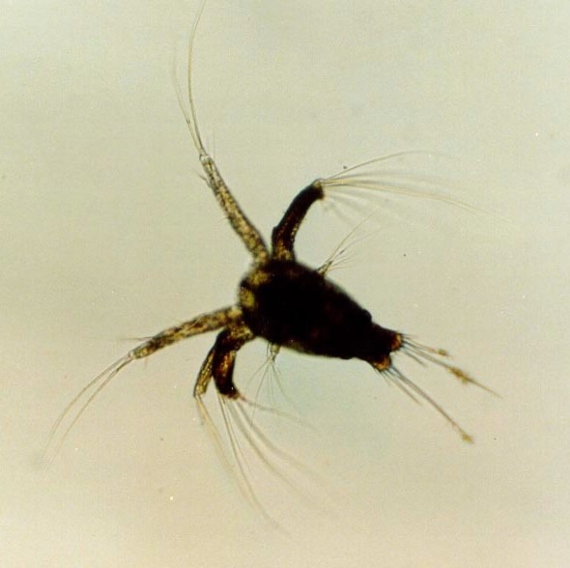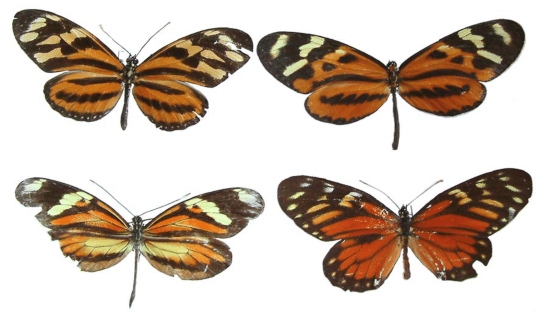In the year 1859, Charles Darwin published On the Origin of Species, which over time has become a text that is widely accepted and central in biology and science in general. But it initially faced a great deal of opposition leading several scientists to come to its defense, some of whom were fairly well known: Wallace, Huxley, Lyell, Hooker, etc. However, its earliest support, which became crucial to the acceptance of the theory, came from an unknown German naturalist exiled in Brazil: Fritz Müller.
Who was this person? What was his relationship with Darwin like? How did he contribute to theories of evolution?
MÜLLER-DESTERRO
Born in Germany (March 31,1821 – May 21, 1897), Müller studied medicine but his passion was observing and analyzing nature. Since he refused to sign the pledge that Germany required to practice medicine, he moved to Brazil in 1952 where an acquaintance, Blumenau, had recently set up a Germany colony named after its founder. From there he moved to Nossa Senhora do Desterro – in fact it is sometimes known as Müller-Desterro – and currently as Florianíápolis. In this town and in other Brazilian towns, he fully exercised the profession of naturalist – observing, studying and describing nature until his death in 1897.

Above all, he started to analyze animals, crustaceans, butterflies and birds. And that is what he was doing – studying and describing nature as a classic naturalist, when in the year 1861 he came across the German translation of On the Origin of Species. Like a new Saul-Saint Paul, he immediately began interpreting and supporting his observations in light of Darwin’s new theory of evolution. In fact, in 1864, he published a text ‘Für Darwin’ (For Darwin) in which he explained the characteristics of crustaceans according to this theory. When Darwin found out about it, he supported its translation into English (which took place in 1869 under the title Facts and Arguments for Darwin, which can be found online. The German text was recently translated into Spanish by the publisher Granada University under the title ‘En Apoyo de Darwin’ (In Support of Darwin)), and he began to include contributions from it in the successive editions he published of On the Origin of Species after the first edition in 1859. And in correspondence that lasted 17 years until Darwin’s death in 1882, he even asked him to make observations of animals and plants for him to resolve various evolutionary problems. In fact, Müller belongs to the select and restricted club of recipients of Darwin’s letters, with more than 100 letters exchanged.
MÜLLER IN THE ORIGIN OF SPECIES
In the sixth and final edition (1872) of On the Origin of Species, Darwin mentions Müller in relation to several characteristics of crustaceans covered in his text. First, in the second chapter on Variation under Nature – following the first on Variation under Domestication – Darwin includes Müller’s observation that there are two different forms of a male crustaceans in Brazil in terms of the claws and antenna. And Darwin argues that in this case, and others like insects, ants, plants, etc. in which there are two or three forms of males and/or females in the same species, although they now appear without intermediate versions, there must have been gradations at first – a central aspect of his theory. And of course, both authors agree that these different forms must have appeared due to natural selection.
Later, in relation to the few crustaceans with air respiration, who are therefore capable of living outside of the water, Darmen mentions Müller’s studies of two families of these crustaceans who show that while they are very similar in their important characteristics – sense organs, stomach, circulatory system, etc. – they are very different in the structures that allow for air respiration. And here he includes Müller’s arguments that these differences are likely due to the fact that “natural selection would have had different materials or variations to work on, in order to arrive at the same functional result.” And concludes that “on the hypothesis of separate acts of creation, the whole issue remains unintelligible.”

And regarding the origin of large groups, Darwin had the idea that the embryonic or larval state of many animals can exhibit the adult conditions of the parent of the whole group. He therefore says that due to what is known about their embryos, it is likely that mammals, birds, fish and reptiles are modified descendents of some remote ancestor who in its adult state had gills, a swim bladder, four limbs shaped like fins and a long tail – all of which were appropriate for aquatic life. This great hypothesis of Darwin was fairly “hypothetical” at the time as the embryonic development of this large group was not yet well known. But in order to support it, Darwin used Müller’s studies of crustaceans in which Müller demonstrated that in this group with highly diverse forms – from sucking parasites reduced to a sack and roots on a host to large crabs, shrimp, etc. – all of them start as larvae in the form of nauplius that live and feed in the middle of the sea, not adapted to any particular condition of existence. And here Darwin argues in favor of Müller that “at some very remote period an independent adult animal, resembling the nauplius, existed, and subsequently produced, along several divergent lines of descent, the above-named great Crustacean groups.”
Moving away from crustaceans and Müller’s text, in relation to Darwin’s idea of the gradual nature of evolution, in On the Origin of Species, he also used another one of his apostle’s observations, in this case with respect to the origin of climbing plants. Specifically, Darwin argues that this type of plants must have originated through the natural selection of plants that initially showed a slight tendency to movements of this kind. And to support this theory, Darwin uses Müller’s observation that in the young stems of plants like flax, and in some others, certain irregular turns are observed which natural selection could act upon in order to finally produce the climbing phenotype.
MÜLLER BEYOND THE ORIGIN OF SPECIES
Müller also made other important contributions to evolutionary theory that were not covered by Darwin in The Origin, as Müller developed them in 1872 when the great British naturalist had definitively completed the text. His most important contribution, for which he is best known, is ”Müllerian mimicry”. It differs from Batesian mimicry, which is better known and which Darwin did cover, describing it initially in butterflies but stating that it also takes place in other insects and even in frogs and snakes. In this case, Müller maintained that there are situations in which an animal species that tastes bad to predators – or poisonous – but which is not very abundant, looks similar in coloring and morphology to a different species that also tastes bad – or poisonous – but which is more abundant. And he mathematically demonstrated – it was one of the first appearances of numbers in biology, Mendel’s was the other – how these situations can be established.

He also described the existing structures in the stems of certain Urticaceae plants of the Cecropia genus. Ants of the Azteca genus that live on them eat the plants, and in exchange, defend them from herbivores and other plants. These structures are currently known as “Müller food corpuscles” and are the subject of intense research, as is the Müllerian mimicry and other phenomena he described.
Finally, throughout his time in Brazil, he described diverse species of plants and made several taxonomic contributions for crustaceans, including several new genera.
In conclusion, it can be said that thanks to Müller’s contributions which Darwin included in his great book – as well as others not included in this text – evolutionary theory through natural selection received great support and momentum, at a key initial point due to the great opposition it had generated. In recognition of all of this, Darwin wrote in his correspondence that Müller was the best observer of nature he had met” and “the prince of observers”.
Comments on this publication